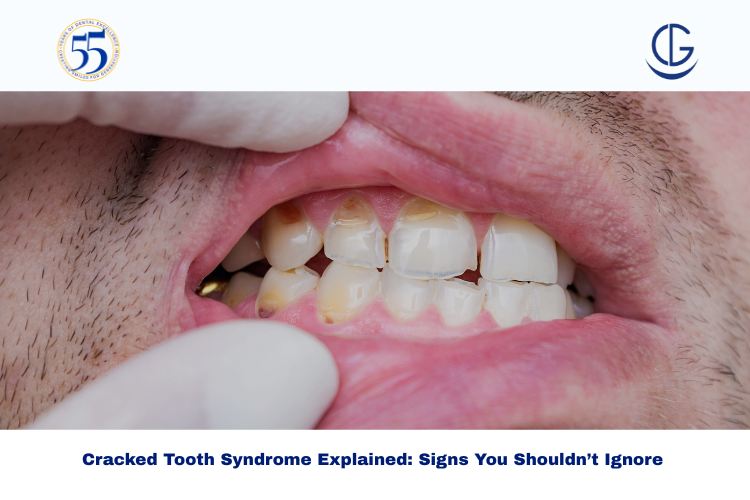Schedule Appointment




Cracked Tooth Syndrome (CTS) is one of the more challenging dental problems to detect and diagnose, yet it can cause persistent discomfort and lead to serious dental damage if ignored. At Dr Gowds Dental Hospital in Hyderabad, our team often encounters patients with vague, intermittent pain when chewing or sudden sensitivity to hot and cold drinks — classic signs of CTS.
The tricky part? The cracks are often invisible to the naked eye, sometimes even to standard dental X-rays. Without early detection, these small fractures can spread, eventually resulting in tooth breakage or even tooth loss.
Cracked Tooth Syndrome occurs when a tooth develops a partial crack, often starting in the enamel and sometimes extending into the dentin or pulp. Unlike a completely fractured tooth, the crack may not separate the tooth into distinct pieces — making it harder to identify.
Patients with Cracked Tooth Syndrome often describe symptoms that seem inconsistent:
The unpredictable nature of symptoms can delay diagnosis, which is why seeing a dentist promptly is essential.
At Dr Gowds Dental Hospital, our approach is systematic and thorough to avoid misdiagnosis.
Understanding your dental history and pain triggers is the first step. We ask about when the pain occurs, its intensity, and any related dental issues.
Using magnification loupes and fiber-optic lighting, we examine teeth for visible fractures. These tools can reveal cracks invisible under normal lighting.
We use a specialized device or even a simple wooden stick for controlled biting to isolate which tooth triggers pain, especially during release of pressure.
A special dye can seep into cracks, making them more visible under magnification.
While regular X-rays may not always reveal CTS, they are invaluable for ruling out decay, abscesses, or bone loss that might be causing similar pain.
In complex cases, a cone beam CT scan can provide a 3D image of the tooth structure, revealing deeper or more complex cracks.
Because CTS symptoms overlap with other dental issues like cavities, gum disease, or sinus-related tooth pain, self-diagnosis is unreliable. Early professional evaluation at a trusted dental clinic like Dr Gowds Dental Hospital means:
While not all cracks are avoidable, these steps reduce your risk:
Cracked Tooth Syndrome is a subtle but potentially serious dental problem. Because cracks are often tiny and symptoms inconsistent, early and accurate diagnosis is crucial. If you notice sharp pain when chewing, unusual sensitivity, or unexplained dental discomfort, consult an experienced dentist — like the specialists at Dr Gowds Dental Hospital in Hyderabad — for prompt evaluation and treatment.
Cracked Tooth Syndrome is a condition where small, often invisible cracks in a tooth cause pain, especially during chewing or temperature changes.
No, the crack will not heal naturally. Professional treatment is necessary to prevent worsening.
We combine patient history, visual exams with magnification, bite tests, dye application, and advanced imaging to detect even hairline cracks.
Pain when chewing, sensitivity to hot or cold, and intermittent discomfort are common early indicators.
The crack can deepen, leading to infection, pulp damage, or tooth loss.